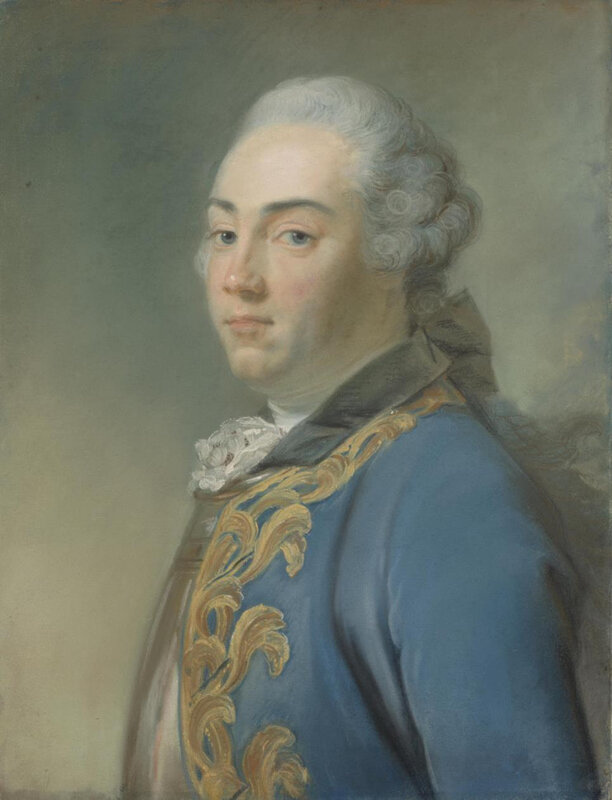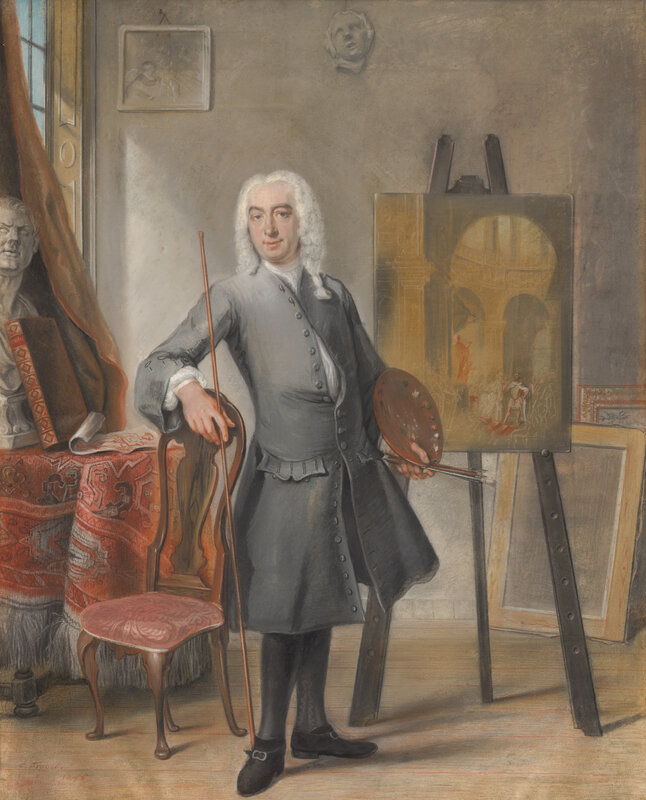Mauritshuis receives Portrait of Van Kretschmar by Perronneau
Jean-Baptiste Perronneau, Portrait of Jacob van Kretschmar (1721-1792), 1754. Pastel and crayon on paper, 60 x 45 cm, Mauritshuis, The Hague. Gift of Jonkheer F.G.L.O. van Kretschmar, 2018.
THE HAGUE.- Last year the Mauritshuis received a generous gift from Jonkheer F.G.L.O. van Kretschmar: a magnificent pastel portrait by the French artist Jean-Baptiste Perronneau (c. 1715-1783), 1754. The portrait shows Jacob van Kretschmar of The Hague, the donor’s ancestor. The pastel, which had remained in the family, is a superb example of Perronneau’s work. Pastels are extremely sensitive to light, and so cannot be on permanent display, but from today the new acquisition will be exhibited for several months in Room 13.
Emilie Gordenker, Mauritshuis Director: ‘We are deeply grateful to Jonkheer van Kretschmar. The Mauritshuis has a small, but fine collection of eighteenth-century pictures – in particular pastels - and this acquisition enhances our holdings in this area significantly.’
Travelling Pastel Artists
The eighteenth century in the Netherlands is often described in art historical literature as the century of Cornelis Troost (1696-1750). The Mauritshuis has a unique collection of pastels by Troost, including the well-known NELRI series (a set of five humorous pastels). Troost was only one of many artists working at that time. The art world was extremely international in the eighteenth century and artists travelled throughout Europe. There were many foreign portrait painters working in the Netherlands for varying lengths of time. With the arrival of talented artists such as the Parisian Jean-Baptiste Perronneau, the Swiss Jean-Étienne Liotard (1702-1789) and the German Johann Friedrich August Tischbein (1750-1812), pastel portraits became popular in the Netherlands. Perronneau was the first foreign pastel artist to come and work in the Netherlands, and it was during his first stay that he produced the portrait of Van Kretschmar.
Today we know of some 45 portraits that Perronneau made in the Netherlands, thirty of which are pastels and the rest oil paintings. After his first visit in 1754, the artist regularly returned to the Netherlands, where he was extremely successful. Almost half of the extant Dutch portraits were created during Perronneau’s second stay in 1761 in Amsterdam and The Hague. He also made portraits of the young Orange prince William V and his sister Princess Wilhelmina Carolina at that time, but further commissions from the court never materialised. Perronneau died in 1783 in Amsterdam.
Portrait of Jacob van Kretschmar (1721-1792)
Perronneau signed and dated the pastel in elegant letters in the top left-hand corner: ‘Perronneau / Peintre du Roy / en 1754 / à La Haye’. The composition of the portrait is simple, yet powerful. The 33-year-old military man Jacob van Kretschmar (1721-1792) is portrayed half-length. The loose, but convincing way in which Perronneau rendered the details in the powdered hair and the jabot – the frill of lace at the neck – demonstrate his great talent. The portrait’s appeal is further enhanced by the elegant, seemingly relaxed pose, the bright colours and the serene light. The blue tailcoat edged with gold thread stands out against the light background, where the blue of the paper still shimmers through.
The Donor
The donor of the pastel by Perronneau is a well-known figure in the Dutch museum world. Jonkheer F.G.L.O van Kretschmar (1919-2019) was a Dutch art historian and genealogist. He was the director of the Iconographic Bureau for many years, which today forms part of the Netherlands Institute for Art History – RKD in The Hague. Van Kretschmar was of great value to the Iconographic Bureau – he saw to it that the institution did not solely concentrate on collecting documentation about Dutch portraits, but also focused on their scientific study. He also made a great personal contribution with his publications on Dutch portrait art – published over many decades – and the inventories he made of private collections of family portraits, usually depicting members of the aristocracy. Van Kretschmar’s great dedication to and keen interest in Dutch cultural heritage were recognised when he was awarded the silver museum medal on his retirement as director in 1984.
Cornelis Troost (1696 - 1750), Self-Portrait, 1745, pastel, gouache on parchment, 62 x 52 cm, signed and dated: C. Troost. / 1745, Mauritshuis, The Hague, Inv. n° 94. © 2019 Mauritshuis
Johann Friedrich August Tischbein (1750 - 1812), Portrait of Frederika Louise Wilhelmina of Prussia (1774-1837), c. 1785 - 1795, pastel on paper, 64.8 x 53.5 cm, Mauritshuis, The Hague, Inv. n° 286. © 2019 Mauritshuis.

/https%3A%2F%2Fprofilepics.canalblog.com%2Fprofilepics%2F1%2F0%2F100183.jpg)
/https%3A%2F%2Fstorage.canalblog.com%2F03%2F02%2F119589%2F96711876_o.jpg)
/https%3A%2F%2Fstorage.canalblog.com%2F11%2F31%2F119589%2F94773502_o.jpg)
/https%3A%2F%2Fstorage.canalblog.com%2F20%2F83%2F119589%2F94772815_o.jpg)
/https%3A%2F%2Fstorage.canalblog.com%2F26%2F72%2F119589%2F75604929_o.jpg)
/https%3A%2F%2Fstorage.canalblog.com%2F59%2F60%2F119589%2F26458628_o.jpg)





/http%3A%2F%2Fstorage.canalblog.com%2F06%2F34%2F119589%2F109880029_o.jpg)
/http%3A%2F%2Fstorage.canalblog.com%2F48%2F67%2F119589%2F117969559_o.jpg)
/http%3A%2F%2Fstorage.canalblog.com%2F23%2F48%2F119589%2F122509465_o.jpg)
/image%2F1371349%2F20240425%2Fob_c453b7_439605604-1657274835042529-47869416345.jpg)